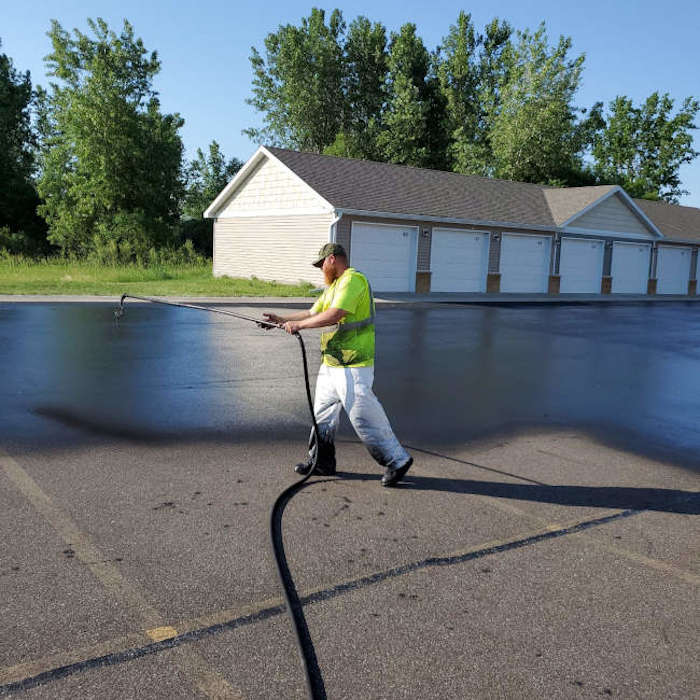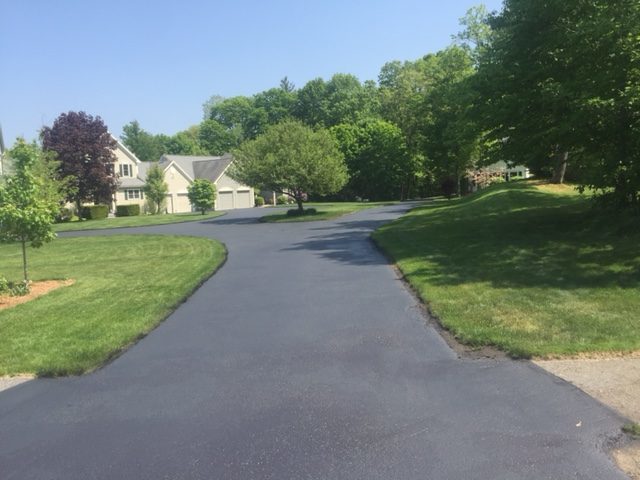Boost Commercial Charm: Hot Mix Asphalt Sealing for Angled Parking Lots
Warm Mix Asphalt: A Sustainable Solution for Sidewalk
Warm Mix Asphalt (HMA) has actually become a leading sustainable choice for sidewalk services, providing a myriad of environmental advantages and cutting-edge modern technologies. Its ability to recycle products and decrease power usage provides a compelling case for its adoption in road building and construction jobs. Moreover, the long-lasting performance and resilience of HMA make it a recommended option for framework advancement. As the need for environmentally friendly construction practices expands, discovering the nuances of HMA's sustainability can offer valuable insights into the future of pavement solutions.
Ecological Benefits of Hot Mix Asphalt

Additionally, Hot Mix Asphalt assists to alleviate urban warmth island impacts. Its dark color takes in sunlight, lowering the amount of warm showed back into the ambience contrasted to lighter-colored pavements. This can decrease ambient temperatures in urban areas, lowering the need for cooling and ultimately minimizing power consumption.
On top of that, Hot Mix Asphalt adds to enhanced stormwater administration. Its permeable nature permits water to infiltrate the pavement and recharge groundwater materials, decreasing overflow and the risk of flooding. These environmental advantages make Hot Mix Asphalt a lasting option for leading freeways and roadways.
Energy Effectiveness in HMA Production
Is energy performance an important consider the production of Hot Mix Asphalt (HMA)? Absolutely. Power plays a substantial function in the manufacturing of HMA, influencing both expense and ecological sustainability. One key element of energy performance in HMA manufacturing is using cozy mix asphalt (WMA) technologies (angled parking). WMA enables for the mixing and placement of asphalt at reduced temperature levels contrasted to traditional hot mix asphalt, leading to minimized power usage during manufacturing. This process not just lowers gas usage however likewise lowers greenhouse gas discharges, making it an extra eco pleasant choice.
Moreover, innovations in plant technologies have actually led to even more energy-efficient HMA manufacturing processes. By maximizing energy use in HMA production, the industry can reduce its carbon impact while keeping top notch pavement products.
Recyclability of Warm Mix Asphalt
The recyclability of Hot Mix Asphalt (HMA) is a critical aspect of its sustainability and long-term environmental impact. HMA is just one of the most recycled materials in the United States, with over 100 million lots of recovered asphalt sidewalk (RAP) being reused annually in new pavement building and construction. Recycling HMA offers a number of environmental advantages, such as lowering the need for virgin materials, reducing energy usage during manufacturing, and decreasing the amount of waste sent to garbage dumps.
The process of reusing HMA entails milling the existing pavement, crushing it right into smaller sized pieces, and mixing it with brand-new accumulation and asphalt binder to produce a recycled mix. On the whole, the recyclability of HMA plays a significant role in promoting lasting methods within the pavement industry.

Long-Term Efficiency of HMA
Asphalt pavements demonstrate resilience and resilience over an extensive period, mirroring the long-lasting performance of Warm Mix Asphalt (HMA) The durability of HMA can be credited to its capability to hold up against heavy traffic lots, rough weather, and the results of aging. Studies have revealed that well-designed and appropriately built HMA pavements can last for click for source 20 years or even more with routine maintenance. The secret to maximizing the long-lasting performance of HMA depends on making use of high-quality products, adhering to best techniques in building and construction, and applying efficient upkeep techniques. Appropriate drain, regular inspections, and timely fixings are necessary for preserving the structural honesty of HMA pavements with time. In addition, improvements in HMA innovation, such as using polymer-modified binders and warm mix asphalt, have even more boosted the resilience and longevity of HMA sidewalks. By focusing on top quality construction useful source and upkeep techniques, HMA remains to verify itself as a cost-efficient and lasting option for resilient pavement framework.

HMA: Longevity and Sustainability
Demonstrating both longevity and sustainability, Warm Mix Asphalt (HMA) has actually become a foundation in the building of long-lasting sidewalk infrastructures - hot mix asphalt. HMA's toughness originates from its capability to withstand hefty lots, extreme weather condition conditions, and high web traffic volumes, making it a trusted option for roadways, highways, and airport runways. The structure of HMA, which normally consists of aggregates, binder, and filler, plays a crucial function in enhancing its durability and resistance to put on and tear
In addition, HMA's sustainability depends on its recyclability and energy-efficient production procedure. The ability to recycle redeemed asphalt pavement (RAP) in new HMA blends minimizes the demand for virgin products and reduces the environmental impact of pavement construction and upkeep. Furthermore, the energy effectiveness of generating HMA hinges on its lower mixing temperature levels compared to various other pavement materials, resulting in minimized power usage and greenhouse gas emissions.
Final Thought
In verdict, hot mix asphalt (HMA) offers a sustainable remedy for sidewalk with its environmentally pleasant attributes. HMA's recyclability, power effectiveness in manufacturing, and long-term longevity make it an environment-friendly selection for roadway building.
HMA is one of the most recycled products in the United States, with over 100 million bunches of reclaimed asphalt sidewalk (RAP) being reused annually in new pavement look at this website construction.The process of recycling HMA includes milling the existing pavement, crushing it right into smaller items, and blending it with brand-new accumulation and asphalt binder to produce a recycled mix.Asphalt pavements demonstrate resilience and durability over an extended period, reflecting the long-term efficiency of Warm Mix Asphalt (HMA) Furthermore, innovations in HMA modern technology, such as the usage of polymer-modified binders and cozy mix asphalt, have even more improved the toughness and long life of HMA sidewalks. The ability to recycle reclaimed asphalt sidewalk (RAP) in new HMA mixtures decreases the demand for virgin materials and lessens the environmental effect of sidewalk building and construction and upkeep.